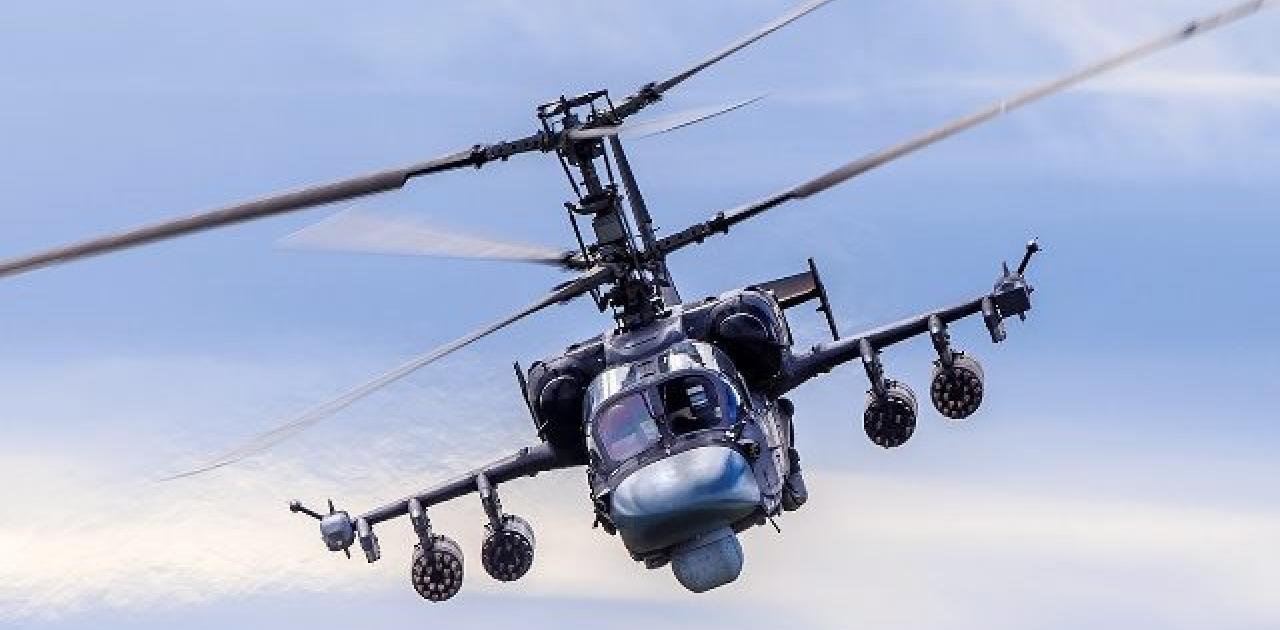
Due to the new electronic methods (EW) of Russian EW/P aircraft, their short attack time and the low altitude from which they operate a few meters above the ground, the Ukrainian air defense faces very serious problems in handling them.
In the war in Ukraine, Russian attack helicopters (UA/P) play a very important role, providing close support to their army formations fighting on the front line and at the same time disrupting Ukrainian attacks by destroying tanks, tomas, tombs, self-propelled guns and enemy anti-aircraft systems. .
The British “RUSI” report on the new Russian methods for the EU / P to deal with Ukrainian radars
According to Article from international Bulgarian media, “There is information from Ukrainian sources on the front that Russian attack helicopter groups are using new methods to counter Ukrainian radars.
Now Ka-52 and Mi-35 helicopters are equipped with homing pods targeting guidance radars.
This information was officially published in the latest report dated September 4 of this year by the Royal United Services Institute RUSI. Authors Dr Jack Watling and Nick Reynolds conduct an in-depth analysis entitled ‘Stormbreak: Fighting through Russian defenses in the 2023 Ukrainian offensive’.
The report details with increasing precision the electronic warfare techniques used by the Russian Air Force against Ukrainian facilities.
The Ukrainian military observed a correlation between GPS de-jamming within Russian formations and subsequent airstrikes, indicating the need for precise navigation to synchronize these operations.
This is especially important because both militaries use similar platforms, a fact highlighted by the report’s authors.
The use of Russian UE/P near the front line and the problems that arise
Currently, Russian helicopters are being used very close to the front line. The report says that this is one of the problems facing the Russian Air Force.
The reason is that the closer the helicopters get to the front, the closer to the front are the command center and refueling and ammunition points.
They are thus within range of the Ukrainian artillery, which makes them vulnerable to attack.
How do Russian directional horns work?
The directional pods used by Russian helicopters are capable of transmitting jamming signals in specific directions, allowing them to selectively target enemy radars while reducing the risk of interference with friendly systems.
These pods use advanced electronic scanning techniques to detect enemy radar emissions.
Once a radar signal is detected, the jamming system can quickly analyze and modulate its frequency and other characteristics to generate an appropriate jamming response.
This targeted approach helps maximize jamming effectiveness while minimizing the chances of inadvertently disabling friendly radar systems or communication channels.
The basic principle of their operation is to flood the radar receiver with a high-intensity signal, rendering it virtually unable to accurately locate and track targets.
By transmitting signals on the same frequency as the enemy’s radar, the pods can create interference and confusion, making it difficult for the radar operator to distinguish between real targets and false targets.
Other applications of Russian directional horns
In addition to jamming, Russian radars can use other electronic warfare techniques to fool enemy radars. For example, they can emit false radar signals, known as booby traps or false targets, to confuse enemy radar tracking algorithms.
By simulating the presence of multiple targets or creating an imaginary echo, these pods can create a chaotic environment for enemy radars, making it difficult for them to accurately locate and engage real targets.
This deception capability adds another layer of complexity to enemy anti-radar operations, reducing their effectiveness and increasing the survivability of Russian helicopters.
Developed Russian guidance capsules
In addition, Russian electronic warfare guidance pods used by Ka-52 and Mi-35 helicopters are designed to be highly adaptable and upgradeable. This may include advanced signal processing algorithms and frequency hopping techniques to counter advanced enemy radar technologies.
By constantly analyzing and adapting to enemy radar emissions, these pods can maintain their effectiveness even against advanced radar systems.
The pods’ ability to be upgraded with new software and hardware ensures that they remain a powerful electronic warfare tool capable of tackling emerging threats on the modern battlefield.
Ukrainian countermeasures
Although the Ukrainian Armed Forces have the geographical location of supply points for Russian helicopters and their weapons, the Ukrainian side faces difficulties.
The Royal United Services Institute (RUSI) explains a complex situation, noting that “the lack of tactical air defense within the Ukrainian arsenal, coupled with the persistent low altitudes these assets maintain, and the transient time in which they operate, collectively contribute to the massive attack.” The challenge of confronting an aggressive air attack
Conclusion
From the above, new electronic warfare (EW) methods of Russian Mi-35s and Ka-52s attack helicopters “attack” Ukrainian air defense radars were revealed.
In conclusion, we can say that Ukrainian air defense due to specific EU/Russian Federation electronic warfare methods, the short time of their attack and the low altitude from which they operate a few meters above the ground, faces very serious problems. in dealing with them.

“Hipster-friendly coffee fanatic. Subtly charming bacon advocate. Friend of animals everywhere.”





More Stories
F-16 crashes in Ukraine – pilot dies due to his own error
Namibia plans to kill more than 700 wild animals to feed starving population
Endurance test for EU-Turkey relations and Ankara with Greece and Cyprus